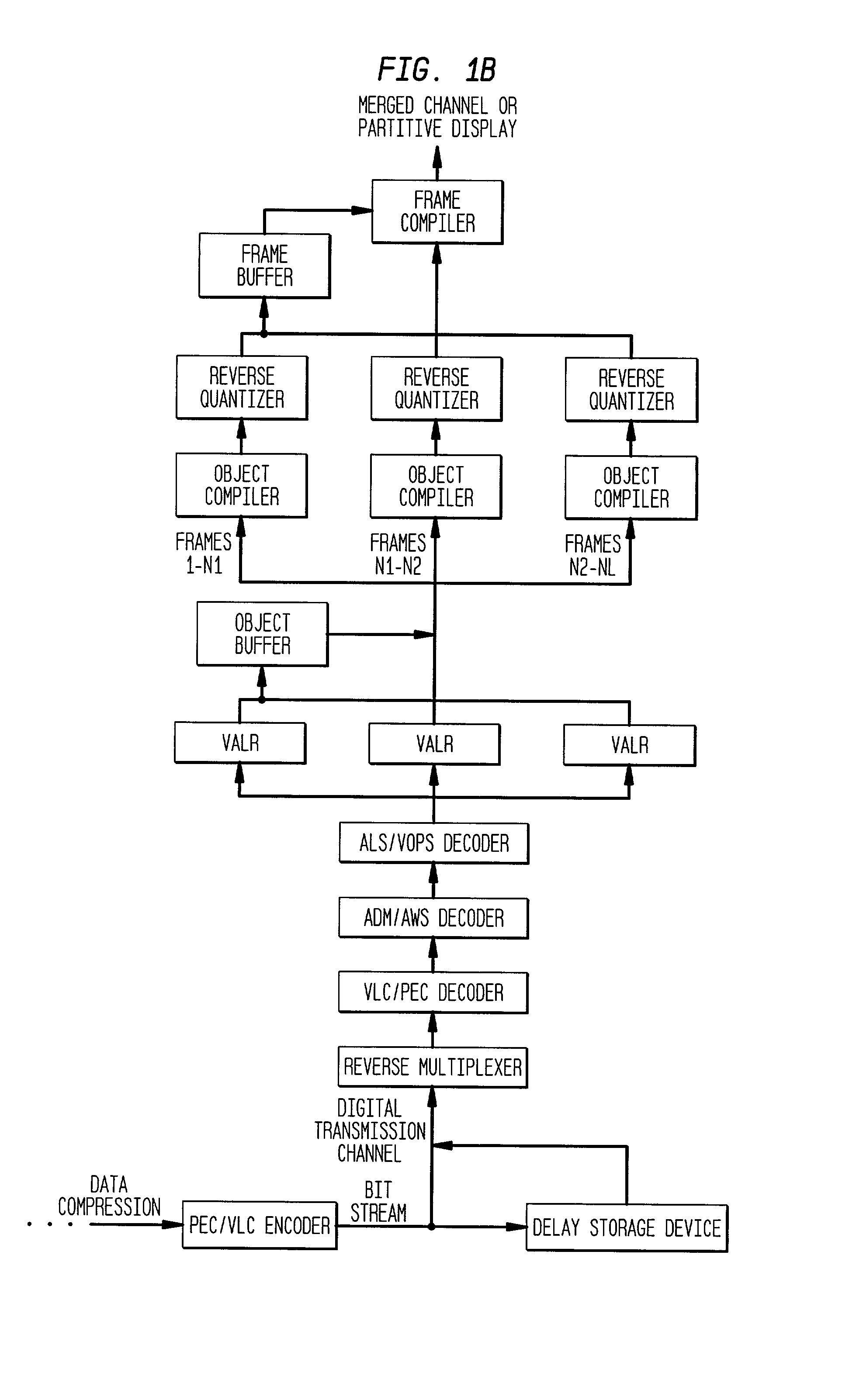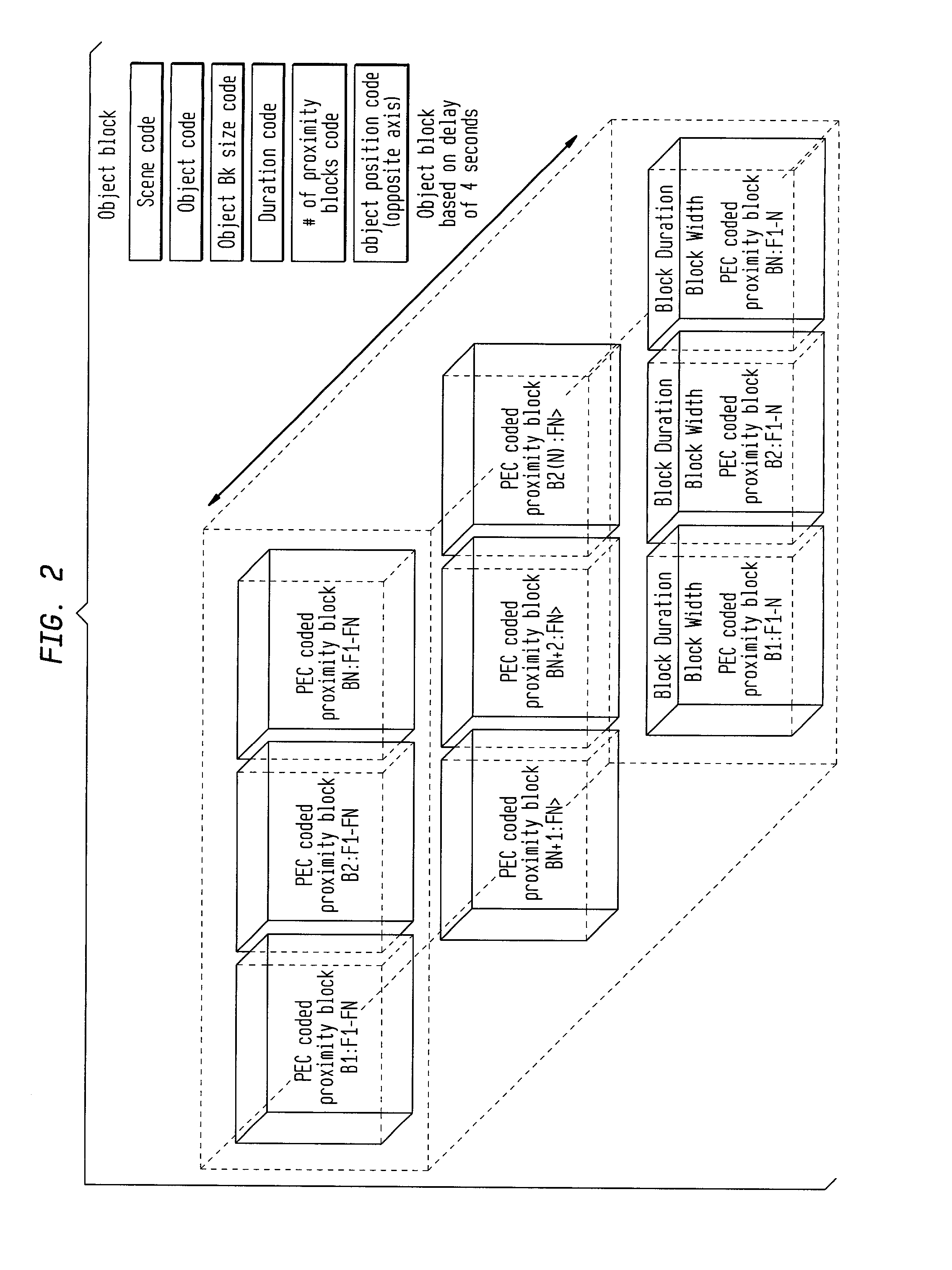System and method for transmitting a broadcast television signal over broadband digital transmission channels
a digital transmission channel and broadcast television technology, applied in the field of encoding and decoding video image signals, can solve the problems of data overflow, requiring significant computational power, and the speed of image decompression maintaining pace with playback, so as to reduce the size of the code, eliminate visual noise, and facilitate the marking of objects
- Summary
- Abstract
- Description
- Claims
- Application Information
AI Technical Summary
Benefits of technology
Problems solved by technology
Method used
Image
Examples
Embodiment Construction
: solving for buffer time required at 12 Kbytes(96,000 bits)per second
[0231] x=?
[0232] y=120 sec
[0233] z=12 Kbytes
[0234] w=2 Kbytes
[0235] m=10 fps
[0236] n=1.2 Kbytes
[0237] x=((10(2)-10(1.2))(120)) / 12
[0238] x=80 sec.
[0239] Ratio of content to advertising and sp at 12 Kbytes(96,000 bits)per second 2:3
[0240] x=?
[0241] y=120 sec
[0242] z=7 Kbytes
[0243] w=2 Kbytes
[0244] m=6 fps
[0245] n=1.2 Kbytes
[0246] X=((6(2)-6(1.2))(120) / 7
[0247] X=82 sec
[0248] Ratio of content to advertising and sp at 7 Kbytes (56,000 bits) per second=2:3
[0249] Assumption 40 K upload speed of server network content delivery system
[0250] Intro and sp sequences 8 to 15 bitmaps, 25 to 30 k
[0251] Length of intro and sp 5, 15, and 30 sec
[0252] dvj or talking heads avg. 8 to 10 frames, 25 to 30 k
[0253] length of talk 15 or 22.5 or 30 seconds
[0254] Sec Down at 40 kps
[0255] 5 200 k
[0256] 15 600 k
[0257] 22.5 900 k
[0258] 1200 k
[0259] Use choosing or any period in which user has not actually asked for content utilize time to load...
PUM
 Login to View More
Login to View More Abstract
Description
Claims
Application Information
 Login to View More
Login to View More - R&D
- Intellectual Property
- Life Sciences
- Materials
- Tech Scout
- Unparalleled Data Quality
- Higher Quality Content
- 60% Fewer Hallucinations
Browse by: Latest US Patents, China's latest patents, Technical Efficacy Thesaurus, Application Domain, Technology Topic, Popular Technical Reports.
© 2025 PatSnap. All rights reserved.Legal|Privacy policy|Modern Slavery Act Transparency Statement|Sitemap|About US| Contact US: help@patsnap.com



